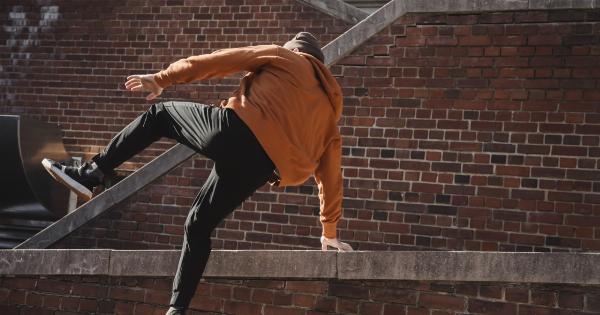Back pain is a prevalent condition that affects millions of people worldwide. It can be debilitating, affecting one’s ability to perform daily activities and negatively impacting overall quality of life.
While there can be various causes of back pain, one factor that has been increasingly recognized as a significant contributor is a sedentary lifestyle.
The Rising Prevalence of Sedentary Behavior
In recent years, sedentary behavior has become increasingly common due to the advancement of technology, changes in work culture, and modern lifestyles.
People spend hours sitting in front of computers, working desk jobs, or engaging in activities that require minimal physical activity.
This sedentary behavior has several adverse effects on overall health, including an increased risk of obesity, cardiovascular diseases, and musculoskeletal disorders.
One particular area that is significantly affected by a sedentary lifestyle is the back.
The Link Between Sedentary Lifestyle and Back Pain
A sedentary lifestyle can lead to back pain through several mechanisms. When we sit for prolonged periods, our muscles become stiff and stressed.
The lack of movement and physical activity causes our muscles to weaken, leading to imbalances in muscle strength and stability.
In particular, the core muscles, which play a vital role in supporting the spine and maintaining proper alignment, tend to become weak with prolonged sitting. This weakness can further exacerbate back pain and lead to reduced spinal stability.
Sitting for extended periods also puts excessive pressure on the intervertebral discs, the cushions between each vertebra in the spine.
This increased pressure can result in disc degeneration, herniation, and nerve impingement, leading to chronic back pain.
In addition to muscle weaknesses and disc-related issues, a sedentary lifestyle can also lead to poor posture.
When seated for extended periods, our bodies tend to slouch or adopt improper sitting positions, which strain the muscles and ligaments surrounding the spine.
The Importance of Physical Activity for a Healthy Back
Regular physical activity is crucial for maintaining a healthy back and preventing chronic pain.
Engaging in exercises that strengthen the core muscles, such as Pilates, yoga, or specific back exercises, can help improve muscle strength and spinal stability.
It is recommended to incorporate both cardiovascular exercises, such as walking or swimming, and strength training exercises into your routine.
These activities not only promote overall fitness but also help alleviate back pain and reduce the risk of developing chronic conditions.
Additionally, taking frequent breaks and incorporating movement into your daily routine can help counteract the negative effects of prolonged sitting.
Simple activities like stretching, walking, or standing at regular intervals can help alleviate muscle stiffness and reduce the strain on the spine.
Ergonomics and Back Pain
Another essential aspect to consider in preventing back pain is ergonomics. In both office and home environments, it is crucial to set up workstations that promote proper posture and support the natural curvature of the spine.
Investing in an ergonomic chair, using an adjustable desk, and ensuring that the computer screen is at eye level can help prevent unnecessary strain on the back and neck.
Employing proper ergonomics can significantly reduce the risk of developing chronic back pain.
The Role of Diet and Lifestyle Choices
While physical activity and ergonomics play a crucial role in preventing back pain, it’s essential also to pay attention to diet and lifestyle choices.
Maintaining a healthy weight is vital as excess body weight puts additional stress on the spine and can worsen back pain.
A well-balanced diet rich in essential nutrients, particularly calcium and vitamin D, can support bone health and reduce the risk of conditions such as osteoporosis, which can contribute to back pain.
Avoiding smoking and excessive alcohol consumption is also important, as these habits can impair blood flow to the spine and hinder the healing process in case of injuries.
Seeking Professional Help
If you are already experiencing chronic back pain, it is advisable to seek the help of a healthcare professional, such as a physiotherapist, chiropractor, or orthopedic specialist.
They can assess your condition, provide appropriate treatment options, and guide you on exercises and lifestyle modifications.
Depending on the severity and underlying cause of the back pain, treatment options can range from physical therapy and medication to more invasive interventions such as surgery.
Take Action for a Healthy Back
Preventing chronic back pain starts with making conscious choices to lead an active lifestyle.
Incorporating physical activity into your daily routine, creating an ergonomic work environment, and maintaining a healthy diet are all steps that can significantly reduce the risk of developing back pain and improve overall spinal health.
Remember, a sedentary lifestyle can increase the risk of chronic back pain, but with the right approach, you can take control of your back health and enjoy a pain-free life.































